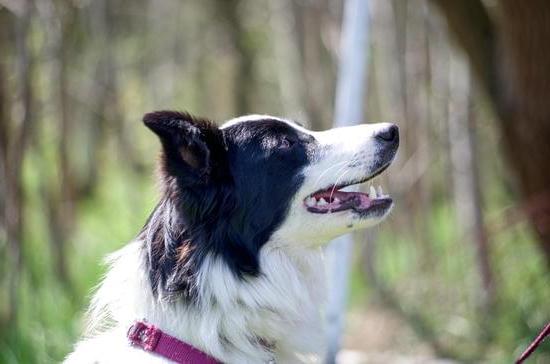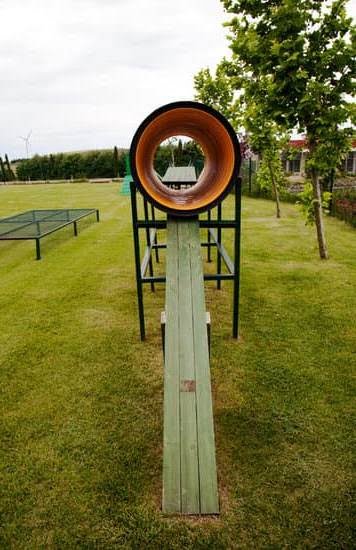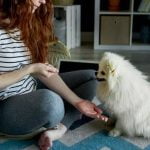When it comes to training a dog, the question of when to start is crucial. The early stages of a dog’s life play a vital role in shaping their behavior and habits for the future.
Understanding the developmental stages in dogs and implementing appropriate training methods can make a significant impact on their overall well-being and behavior. In this article, we will explore the importance of early training, age-appropriate exercises, and common mistakes to avoid when training a young dog.
Early training is essential for setting the foundation for good behavior in dogs. It helps in preventing behavioral problems and ensures that your furry companion grows up to be a well-behaved member of your family.
Understanding the developmental stages in dogs is crucial in determining the right time to start training and what skills are appropriate for each stage. Socialization plays a key role in this aspect as it helps in shaping your dog’s behavior around people and other animals.
Positive reinforcement versus punishment is an important consideration when choosing the right training method for your dog. Implementing basic commands at the right time can greatly influence your dog’s response to instructions. Potty training is also an essential part of early training, and knowing effective tips and tricks can lead to success in this area.
Lastly, providing age-appropriate exercise and mental stimulation is crucial for a growing pup’s development. By understanding these factors, you can ensure that you are starting your puppy off on the right paw with their training journey.
Understanding Developmental Stages in Dogs
It’s important to understand the developmental stages in dogs when it comes to training them. Puppies go through various stages of development, and each stage comes with its own set of challenges and opportunities for learning. The age at which you should start training your dog will depend on their individual development, but it’s generally recommended to start as early as possible.
Puppies begin learning from the moment they are born, and early training can help set the foundation for good behavior. Basic commands such as sit, stay, and come can be introduced to puppies as young as 8 weeks old. At this stage, they are able to start understanding and responding to simple commands. However, it’s important to keep training sessions short and fun, as their attention spans may be limited at this age.
As puppies grow older, they enter adolescence around 6 months of age. This is a crucial stage in their development where they may become more independent and test boundaries. Consistent training and positive reinforcement are key during this stage to prevent any behavioral issues from arising. With the right approach, you can help your adolescent dog successfully transition into adulthood without developing any unwanted habits.
| Developmental Stage | Training Start Age |
|---|---|
| Puppy (8 weeks) | 8 weeks old |
| Adolescence (6 months) | As soon as possible |
Socialization
Why Socialization Matters
Proper socialization helps puppies adjust to new environments, people, and other animals. It also reduces the likelihood of fear-based aggression and overall anxiety in adult dogs. By exposing your puppy to different sights, sounds, smells, and experiences during their critical developmental period, typically between 3 weeks to 14 weeks of age, you can help them grow into confident and well-adjusted pets.
Strategies for Successful Socialization
Introduce your puppy to new experiences gradually and in a positive manner. Take them on walks in different neighborhoods, allow them to meet and interact with various people and other animals, and expose them to different surfaces such as grass, pavement, sand, and gravel. It’s also important to enroll your puppy in obedience classes where they can interact with other dogs under the supervision of experienced trainers.
By starting the socialization process early on, you are setting your puppy up for success in their adult life. It’s imperative to remember that positive experiences during this time will shape your dog’s behavior for many years to come.
Positive Reinforcement vs Punishment
When it comes to training your dog, it’s important to choose the right method for their development. Positive reinforcement and punishment are two common approaches to training, and understanding the differences between them is crucial for effective results.
Positive reinforcement involves rewarding your dog for exhibiting desired behaviors. This can include treats, praise, or toys as a form of motivation. By rewarding good behavior, you are encouraging your dog to repeat those actions in the future. This method is known to build a strong bond between you and your pet and create a positive learning environment.
On the other hand, punishment-based training methods rely on correcting unwanted behavior through aversive techniques such as yelling, leash jerking, or using shock collars. While these methods may show short-term results, they can have long-term negative effects on your dog’s well-being and behavior. It can lead to fear, anxiety, and even aggression in some cases.
To determine the right training method for your dog, consider their temperament, age, and specific needs. Puppies respond well to positive reinforcement due to their playful nature and eagerness to please. Older dogs with behavioral issues may benefit from a more structured approach that includes positive reinforcement along with behavioral modification techniques.
- Positive reinforcement builds trust and confidence in your dog
- Punishment-based methods can lead to fear and aggression
- Consider your dog’s age and temperament when choosing a training method
Ultimately, using positive reinforcement creates a harmonious learning environment for your dog while strengthening the bond between you both. By opting for this approach over punishment-based methods, you set the foundation for a well-behaved and happy furry companion.
Basic Commands
Introduction to Basic Commands
When considering how old to start training a dog, it’s important to introduce basic commands at the right time in your puppy’s development. Basic commands such as sit, stay, and come are essential for building a strong foundation of obedience and communication with your canine companion. Introducing these commands at the appropriate age can set the stage for a well-behaved and obedient adult dog.
When to Introduce Basic Commands
Puppies as young as 8 weeks old can start learning basic commands. At this age, they are receptive to learning and eager to please their owners. It’s important not to overwhelm them with too many commands at once, but rather focus on one or two at a time. As they grow older, you can gradually introduce more commands into their training regimen.
How to Teach Basic Commands
The key to teaching basic commands is consistency and positive reinforcement. Use treats, praise, and rewards to encourage your puppy to perform the desired behavior. Keep training sessions short (5-10 minutes) and frequent throughout the day. Use clear and consistent verbal cues along with hand signals to reinforce the commands. It’s also important to be patient and understanding during the learning process as puppies may take some time to fully grasp each command.
By starting early and using positive reinforcement techniques, you can effectively teach your puppy basic commands that will form the basis of a well-trained dog in the future.
Potty Training
When it comes to potty training a dog, many pet owners often wonder how old to start training a dog in this aspect. The truth is, the earlier you start, the better. Potty training is an essential part of a dog’s early education and can set the foundation for good behavior in the future.
Ideally, you should begin potty training your puppy as soon as you bring them home, typically around 8 weeks of age. However, it’s important to keep in mind that every dog is different, and some may catch on quicker than others.
One of the key tips for success in potty training is consistency. Establishing a routine for bathroom breaks and sticking to it will help your puppy understand what is expected of them.
Take your puppy outside first thing in the morning, after meals, before bedtime, and frequently throughout the day. Use a word or phrase such as “go potty” to associate with the act of eliminating, and be sure to praise and reward your puppy when they do their business outside.
In addition to consistency, patience is also crucial when potty training a young dog. Accidents are bound to happen, so it’s important not to scold or punish your puppy for making mistakes. Instead, clean up any messes without drawing attention to them and continue with positive reinforcement for successful outdoor bathroom trips. With time and dedication, your puppy will learn where they are supposed to go potty and will become fully house trained.
Age-Appropriate Exercise and Mental Stimulation
When considering how old to start training a dog, it’s essential to also consider age-appropriate exercise and mental stimulation. Puppies have different needs than adult dogs, and it’s crucial to tailor their exercise routine and mental stimulation to their developmental stage.
For puppies, short bursts of playtime and low-impact activities are ideal. This can include exploring new environments, socializing with other puppies, and engaging in gentle play with appropriate toys. As the puppy grows older, longer walks and more active games can be introduced to help them burn off excess energy.
It’s also important to provide mental stimulation for dogs of all ages. Interactive toys, puzzle feeders, and obedience training can all help keep a dog’s mind engaged. Mental stimulation is especially important for young dogs as it can prevent behavioral issues such as destructive chewing or excessive barking.
Properly tailoring exercise and mental stimulation to a dog’s age will not only help them maintain physical health but also aid in their mental development. It is an essential part of ensuring that a dog grows up happy, well-adjusted, and well-behaved.
Common Mistakes to Avoid When Training a Young Dog
When considering how old to start training a dog, it’s important to also be aware of the common mistakes to avoid when training a young dog. Training a puppy can be challenging, and many well-intentioned pet owners inadvertently make errors that can hinder the training process.
One of the most common mistakes is starting training too late. Puppies have a critical socialization period between 3 and 14 weeks of age, during which they are most receptive to new experiences. Waiting too long to begin training can result in missed opportunities for crucial developmental learning.
Another mistake to avoid is using punishment as a primary method of training. While it might be tempting to scold or yell at a misbehaving puppy, positive reinforcement has been shown to be much more effective in shaping desired behaviors. Using treats, praise, and rewards can help build a strong bond between you and your dog while effectively teaching them what behaviors are desirable.
Additionally, inconsistency in training can lead to confusion for young dogs. It’s essential to establish clear rules and boundaries from the beginning and maintain consistency in enforcing them. This includes ensuring that all family members are on the same page with regards to behavior expectations and training techniques.
By being mindful of these common mistakes when training a young dog, pet owners can set their puppies up for success and ensure that they grow into well-behaved and happy adult dogs.
Conclusion
When it comes to the question of how old to start training a dog, the answer is clear: as soon as possible. Early training is crucial in shaping a well-behaved and socialized canine companion.
Understanding the developmental stages in dogs and tailoring your training methods accordingly is essential for successful and effective training. Socialization plays a crucial role in ensuring that your dog grows up to be friendly and well-adjusted, making it important to start exposing them to new experiences and environments from a young age.
Choosing the right training method, such as positive reinforcement, sets the foundation for a strong bond between you and your furry friend. Knowing when to introduce basic commands and how to teach them ensures that your pup learns important skills early on. Additionally, successful potty training requires patience, consistency, and understanding of your puppy’s needs.
Exercise and mental stimulation are key components of your dog’s overall well-being and should be tailored to their age for optimal development. Lastly, being aware of common mistakes to avoid when training a young dog can help you navigate the journey more smoothly.
In conclusion, starting your puppy off on the right paw sets the stage for a fulfilling lifelong relationship with your four-legged family member. By prioritizing early training, socialization, positive reinforcement, appropriate exercise, mental stimulation, and avoiding common mistakes, you can ensure that your puppy grows into a well-behaved and well-adjusted adult dog. The effort put into early training pays off in spades as you watch your furry companion thrive throughout their life.
Frequently Asked Questions
What Age Is Best for Training a Puppy?
The best age for training a puppy is around 8 to 12 weeks old. At this age, puppies are more receptive to learning and are able to start understanding basic commands and behaviors.
How Early Should You Start Training a Puppy?
It’s important to start training a puppy as early as 8 weeks old, as this is the prime window for their socialization and learning abilities. However, it’s never too late to start training a dog, but early training sets a good foundation.
What Is the First Thing to Train a Dog?
The first thing to train a dog is typically basic commands such as “sit,” “stay,” and “come.” These commands form the foundation for further training and help establish a line of communication between the dog and its owner.

Welcome to the blog! I am a professional dog trainer and have been working with dogs for many years. In this blog, I will be discussing various topics related to dog training, including tips, tricks, and advice. I hope you find this information helpful and informative. Thanks for reading!





